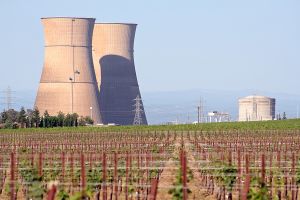U.S. DOE Awards Nuclear Grants

The U.S. Department of Energy (DOE) announced that 11 commercial and public consortia have been selected to receive up to $16 million in grants, subject to negotiation, to conduct detailed siting studies for integrated spent fuel recycling facilities under the Global Nuclear Energy Partnership (GNEP) initiative. DOE will award the grants early next year after negotiations are completed with prospective awardees.
“As our economy grows so will the need for reliable, emissions-free energy generation. Nuclear energy can help meet that need and GNEP can do it in a way that maximizes the benefit of nuclear fuel while minimizing the risk of nuclear proliferation,” DOE Assistant Secretary for Nuclear Energy Dennis Spurgeon says. “That is why we are pleased that so many communities across the country are interested in hosting the initial facilities necessary to support this exciting project. These selections are an important initial step in proceeding to evaluate and select locations to host GNEP facilities.”
Of the 11 sites located throughout the country, six are currently owned and operated by DOE.
The study sites and sponsors are:
1. Atomic City, Idaho -- EnergySolutions, LLC
2. Barnwell, SC -- EnergySolutions, LLC
3. Hanford Site, Wash. -- Tri-City Industrial Development Council/Columbia Basin Consulting Group
4. Hobbs, NM -- Eddy Lea Energy Alliance
5. Idaho National Laboratory, Idaho -- Regional Development Alliance, Inc.
6. Morris, Ill. -- General Electric Co.
7. Oak Ridge National Laboratory, Tenn. -- Community Reuse Organization of East Tennessee
8. Paducah Gaseous Diffusion Plant, Ky. -- Paducah Uranium Plant Asset Utilization, Inc.
9. Portsmouth Gaseous Diffusion Plant, Ohio -- Piketon Initiative for Nuclear Independence, LLC
10. Roswell, NM -- EnergySolutions, LLC
11. Savannah River National Laboratory, SC -- Economic Development Partnership of Aiken and Edgefield Counties
The grantees will perform detailed siting studies related to hosting one or both of the Consolidated Fuel Treatment Center and the Advanced Burner Reactor. The subsequent awards will be for a 90-day period of performance to complete a detailed site characterization study of each sponsored site. Congress provided up to $20 million in FY 2006 for integrated spent fuel recycling facilities siting studies. The remaining funds will be held in reserve to potentially fund supplemental activities if required.
Information generated from the detailed siting studies of non-DOE sites is expected to address a variety of site-related matters, including site and nearby land uses; demographics; aquatic and riparian ecological communities; terrestrial plant and animal habitat; threatened or endangered species; historical, archaeological and cultural resources; geology and seismology; weather and climate; and regulatory and permitting requirements. Information requirements for the DOE sites are more limited due to the availability of previous studies.
The information may also be used in the environmental impact statement (EIS) that will evaluate the potential environmental impacts from each proposed GNEP facility. At the conclusion of the EIS, DOE will make decisions about whether to move forward with the facilities, and if so, where to locate them.
Fourteen applications were originally submitted, and 12 were selected to receive a comprehensive merit review under the criteria listed in the Financial Assistance Funding Opportunity Announcement (FOA) issued in August 2006. Two of the 12 recently decided to collaborate and team, as they proposed the same site for study.
An advanced nuclear fuel recycling center contains facilities where usable uranium and transuranics are separated from spent light water reactor fuel for use in producing new fuel that can be reused in a power reactor. An advanced recycling reactor is a fast reactor that would demonstrate the ability to reuse and consume materials recovered from spent nuclear fuel, including long-lived elements that would otherwise have to be disposed of in a geologic repository. Both facilities could be located at the same site.
The development and deployment of advanced nuclear fuel recycling facilities is a major element of GNEP, part of President Bush’s Advanced Energy Initiative. In general, these technologies focus on separating commercial light water reactor Spent Nuclear Fuel (SNF) into its usable and waste components, fabricating and recycling fast reactor fuel containing transuranic elements from the usable components of SNF, and converting those transuranics into shorter-lived radioisotopes while producing electricity in an advanced recycling reactor.
If you can't contribute, please support us by clicking the Google ad above. Thank you!


1 Comments:
Idaho aligns its stars for GNEP
http://djysrv.blogspot.com/
Post a Comment
Subscribe to Post Comments [Atom]
<< Home